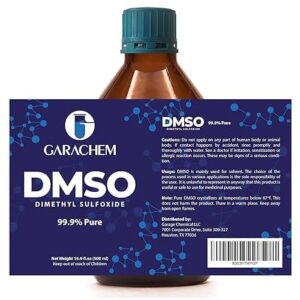Understanding DMSO: Uses, Health Benefits, and Safety Guidelines
Dimethyl sulfoxide, commonly known as DMSO, is a chemical compound with a wide range of applications in medicine, industry, and research. As a byproduct of wood pulp processing, DMSO is an organosulfur compound that has gained attention for its intriguing properties and potential health benefits. This article explores the uses of DMSO, its health benefits, safe usage practices, and important precautions.
What is DMSO?
DMSO is a clear, colorless liquid that is miscible with water and many organic solvents. Due to its ability to penetrate biological membranes, it is extensively used as a solvent in laboratories and as a carrier for pharmaceutical compounds. The unique properties of DMSO have led to its use in various therapeutic applications, although not all of these uses are approved by regulatory agencies like the FDA.
DMSO have led to its use in various therapeutic applications, although not all of these uses are approved by regulatory agencies like the FDA.
Potential Health Benefits of DMSO
- Pain Relief: DMSO is known for its analgesic properties. It is thought to reduce pain by blocking peripheral nerve conduction.
- Anti-inflammatory Effects: DMSO can reduce inflammation, making it a popular choice for treating conditions like arthritis and sports-related injuries.
- Antioxidant Properties: It may help scavenge harmful free radicals, potentially reducing oxidative stress.
- Promotion of Wound Healing: There is some evidence to suggest that DMSO can promote the healing of minor cuts and abrasions by reducing inflammation and possibly enhancing collagen deposition.
- Treatment of Interstitial Cystitis: DMSO is an FDA-approved treatment for this chronic condition of the bladder. It is administered via a bladder instillation, which involves inserting DMSO directly into the bladder.
How to Use DMSO Safely
Using DMSO safely involves understanding its concentration and method of application, which depend on the specific health issue being addressed:
– Topical Application: For most uses, DMSO is applied topically in concentrations ranging from 25% to 90%. It should be applied to a small area of the skin first to test for any adverse reactions. It’s crucial to ensure that the skin is clean and free from any substances that DMSO could carry into the body.
– Bladder Instillation: For treating interstitial cystitis, DMSO is administered directly into the bladder through a catheter by a healthcare professional. This procedure should not be attempted at home.
– Avoiding Contaminants: Because DMSO can carry substances through the skin into the bloodstream, it is vital to use it in a clean environment and ensure that it does not come into contact with toxic substances.
Important Safety Information and Health Warnings
– Regulatory Status: The FDA has only approved DMSO for limited applications, such as interstitial cystitis and certain types of musculoskeletal injuries. Many of its purported benefits are not officially recognized and require further clinical research.
– Side Effects: Potential side effects of DMSO include skin irritation, headaches, dizziness, and a garlic-like taste in the mouth.
– Interaction with Other Medications: DMSO may interact with other medications, especially those applied topically, as it can enhance their absorption and potency.
– Use in Pregnancy and Breastfeeding: Due to insufficient research on its safety, DMSO should not be used during pregnancy or breastfeeding without medical supervision.
DMSO offers several potential health benefits, particularly in pain relief and inflammation reduction. However, it is crucial to use it under the guidance of a healthcare professional to avoid adverse effects and interactions with other medications. The scientific community continues to explore the full potential of DMSO, and future research may provide clearer guidelines and more approved uses for this versatile compound.
Disclaimer: This article is for informational purposes only and should not be taken as medical advice. Always consult a healthcare provider before starting any new treatment.
.



